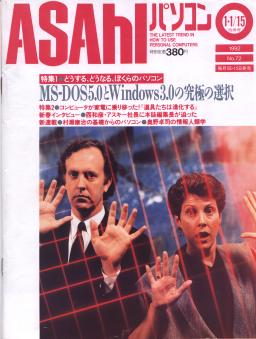In 1989, one of my consulting clients was a company called Centerpoint Communications. Centerpoint was pursuing several projects in Japan, and they were especially interested in developing a location-based entertainment environment that would involve Virtual Reality. I had known Scott Fisher since the early days of the Atari Systems Research Laboratory, where we both worked between 1981 and 1983. I knew that Scott had moved on to NASA Ames Research, where he had led major developments in VR technology under the direction of Dave Nagel, who later became head of Advance Development at Apple, the AT&T, then Palm, whatever. I had great admiration for Scott's artistic and technical achievements.
It was clear to me that Scott would be the perfect partner for the Centerpoint project, which I pointed out to him over a glass of Scotch in a dingy San Jose bar. We did lots of brainstorming, went to Tokyo with the Centerpoint folks in 1990 and talked it up, but the location-based project they were working on didn't materialize. Meanwhile, Joichi Ito came into the picture simultaneously through Howard Rheingold and through Scott's and my mutual acquantance with Timothy Leary and his friend, Mumiko Ito, Joi's mother. Joi was a boy wonder on the Tokyo tech scene - an extraordinarily smart and well-connected young man who was doing things before other people dreamed of them. Among other things, he was busy manifesting the Tokyo rave scene.
 With Joi's encouragement, Scott and I resolved
to form a company - Telepresence Research
- to do R&D in the areas of VR and remote
presence. Hell, we thought, Jaron Lanier
can't be the only game in town. We filed
for incorporation in February of 1991 and
closed a first round of funding in April
from the Media International Corporation
of Japan, with the help of Mrs. Ito and her
contacts at NHK. Scott and I shared equal
ownership of the company; he took the position
of CEO and I assumed the roles of President
and CFO.
With Joi's encouragement, Scott and I resolved
to form a company - Telepresence Research
- to do R&D in the areas of VR and remote
presence. Hell, we thought, Jaron Lanier
can't be the only game in town. We filed
for incorporation in February of 1991 and
closed a first round of funding in April
from the Media International Corporation
of Japan, with the help of Mrs. Ito and her
contacts at NHK. Scott and I shared equal
ownership of the company; he took the position
of CEO and I assumed the roles of President
and CFO. We had shared history and excellent connections with some of the best people in the business in those days. Steve Saunders, an astoundingly good engineer with whom we had both worked at Atari, joined our company as an employee. Michael Naimark, Rachel Strickland, Scott Foster and the Crystal River Engineering group, and Mark Bolas' Fake Space Labs joined with us in a loose confederation that we dubbed the "Telepresence Alliance." Together, we pursued any and all business and art possibilities that came our way - from spread spectrum weenies to Las Vegas entrepreneurs. One of the more memorable moments in the office was the day a Las Vegas type turned bright green and got VR-sick. I rushed out and got him some Dramamine, administered with profuse apologies. "Are you kidding?" he said. "This is GREAT!" Go figure.
Ironically, the most palpable achievement of Telepresence Research during the time I was involved was a film entitled "Be There Here." The film was funded by MICO, co-scripted by the group and directed by Rachel Strickland. Rachel, Naimark and I (a.k.a. Tri-Scorp Productions) shot a good deal of it in Zion Canyon, one of our favorite haunts. (In the first of many hoodoo encounters that has characterized my collaborations with this pair of hooligans, I was nearly struck by lightning while ranting on about the cultural significance of VR et cetera.) A special shot of taken by a camera emerging from the bottom of the Kelp forest at the Monterey Bay Aquarium was staged by Sea Studios. The film explained the technologies of VR, remote presence, and spatialized audio and also featured the individual achievements and skills of the members of the Telepresence Alliance. It was also, of course, a shameless pitch for our business. It screened well in Japan, but wasn't enough to land us the sorts of contracts we needed to make the company a success.
By the end of 1991 we had run through our first chunk of funding and had essentially no revenue and no prospects that would have allowed us to continue to pay the bills or salaries. We had no real business plan and no real business. Damn, I hate being a crash dummy. With our third board member, Stuart Davidson (now of Labrador Ventures), I looked in vain for ways to restructure the company. Finally, when it became clear to me that we could not make the next month's payroll, I suggested to Scott that we take the company into Chapter 11 bankruptcy. He wanted to continue, and so we parted ways. I resigned on Dec. 31, 1991.
Scott held on to the company (although as far as I know, I still own 50%) and used it as his shingle for a consulting firm. Although you won't find me in history of the company on Scott's Telepresence page, I am proud of the effort and grateful for the learning opportunities (i.e., hideous pain and suffering that taught me useful stuff) that came from my first-time experience as a start-up founder.